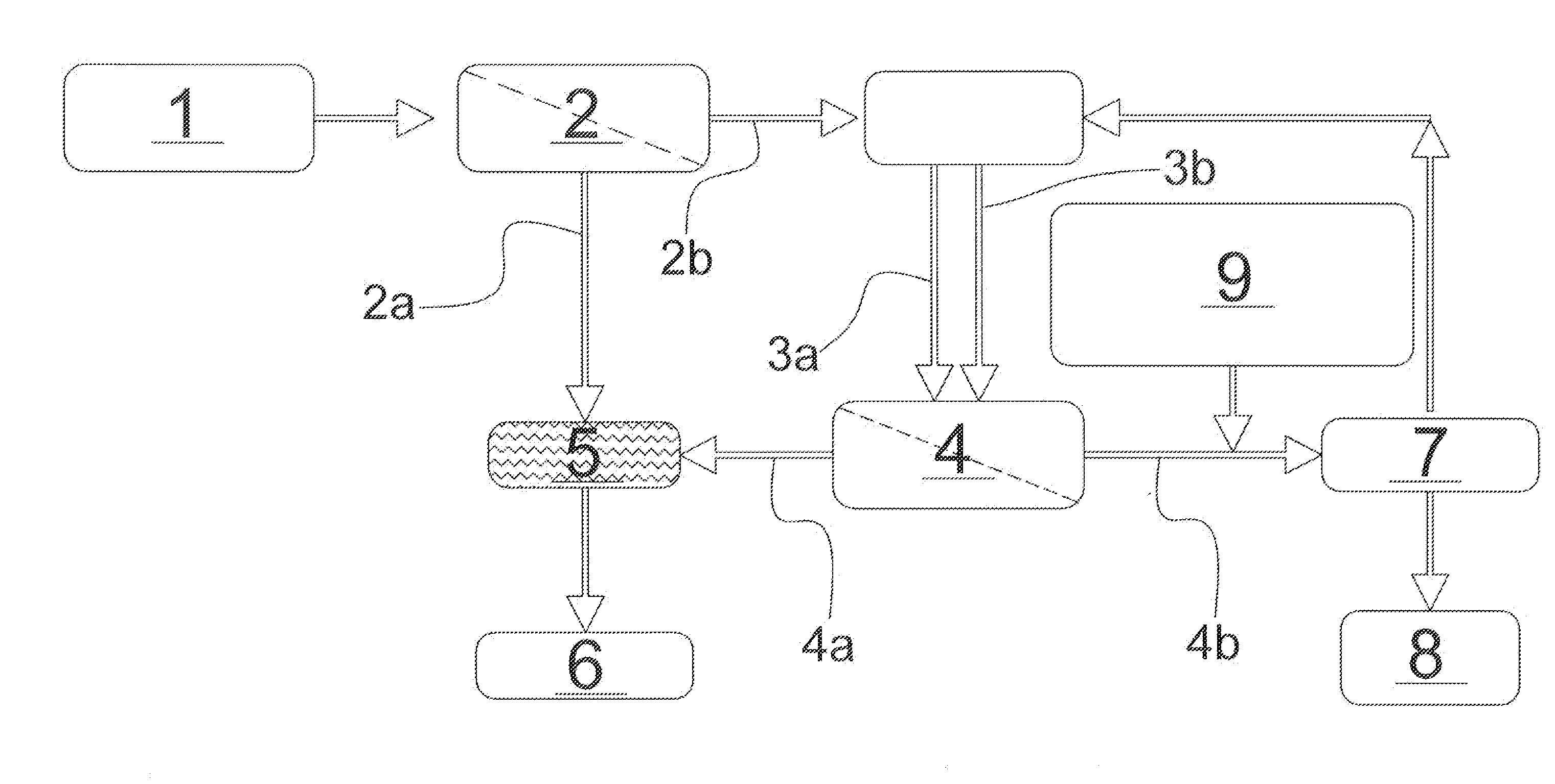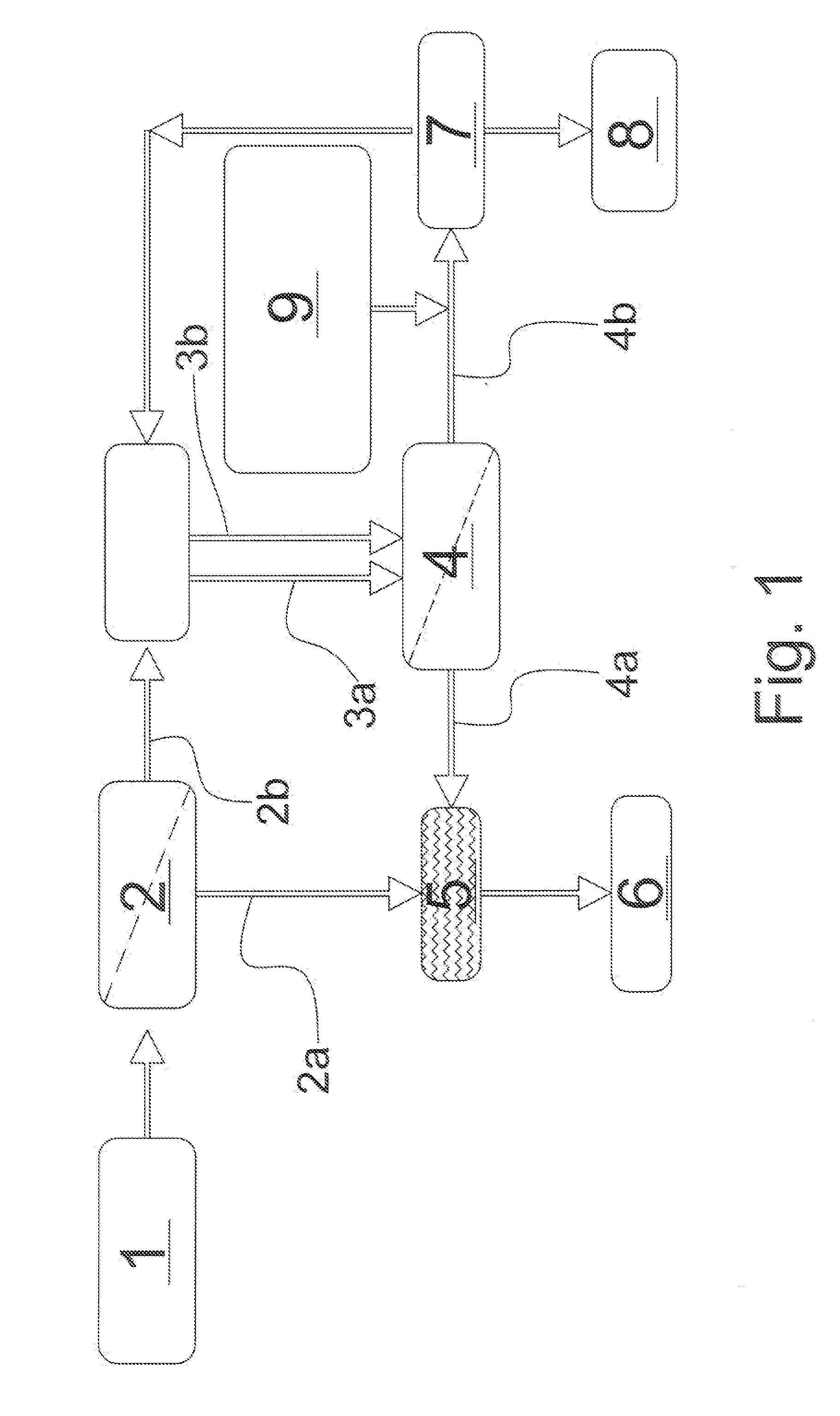Lactose-removing milk process for lactose-free milk production and byproduct use
a technology of lactose-free milk and milk processing, applied in the field of dairy and milk treatment industries, can solve the problems of cumbersome solution, weaker problems, mild digestive problems, etc., and achieve the effect of reducing product costs
- Summary
- Abstract
- Description
- Claims
- Application Information
AI Technical Summary
Benefits of technology
Problems solved by technology
Method used
Image
Examples
example i
[0062]
TestDateno.ActivitiesApr-P1Methodology:21th-14 Use of skim milk (2 g / L). Total solids concentration (SC) up to 12.8% (8.26% protein) using ultrafiltration process (UF). Reconstitution of milk using retentate and soft water to initial protein values of milk (3.1%), using only 2.12% of lactose. Heat treatment of milk-UHT Process- Enzymatic hydrolysis (using β-galactosidase) of lactose remaining less than 1%.Results: Product obtained has a milky and sweet diluted profileNext steps: Raise the profile increasing fat level to 1.6%.
[0063]In this example, skim milk has a butterfat content of 2 g / L. No nanofiltration has used and enzymatic hydrolysis of lactose remaining was less than 1%.
[0064]The result was undesirable because the product was very sweet and diluted.
example ii
[0065]
MayP2Methodology:9th-14 Use of skim milk (2 g / L). Concentration (SC) up to 12.98% (8.14% protein) using UF process. Reconstitution of milk using retentate and soft water to initial protein values of milk (3.1%), using only 2.2% of lactose. Standardization up to 1.6% of butterfat (BF) Heat treatment of milk-UHT Process- Enzymatic hydrolysis of lactose remaining less than 0.5%.Results: Product obtained has a dairy profile, more tan P1 but still less sweet diluted profile.Next steps: Explore the possibility of reducing the use of soft water and reinstate salts and possible flavor compounds that are lost in UF permeate through the inclusion of nanofiltration (NF) process.
[0066]In this example, skim milk had the same butterfat content on treated milk of 2 g / L. concentration through UF has noticeably same concentrations of milk compounds.
[0067]Product is less sweet than example 1, and has a dairy profile, however, has a thin consistency.
example iii
[0068]
MayP3Exploratory test process21st-14To evaluate the feasibility of processing UF permeatewith NF process, in order to improve the dairyproduct profile retrieving salts and possible flavorcompounds, thus decreasing the use of soft water.Methodology: Use of skim milk (2 g / L). Concentration (SC) up to 9.51% (4.2% protein) using UF process. Using UF permeate for processing by NF. Concentration of NF retentate up to 13.5°Bx max (the process stops at this point).Results: It is feasible to perform NF process using UF permeate and decreasing use of soft water for reconstitution of milk without adding lactose to reconstituted product.Next steps: To perform test using UF and NF processes.
[0069]In this example, butterfat content on treated milk is the same, but concentration on final solids and protein is lower such that is less water with ultrafiltration step, because a nanofiltration step is applied to permeate.
[0070]It is feasible performed NF process using UF permeate and using less ...
PUM
 Login to View More
Login to View More Abstract
Description
Claims
Application Information
 Login to View More
Login to View More - R&D
- Intellectual Property
- Life Sciences
- Materials
- Tech Scout
- Unparalleled Data Quality
- Higher Quality Content
- 60% Fewer Hallucinations
Browse by: Latest US Patents, China's latest patents, Technical Efficacy Thesaurus, Application Domain, Technology Topic, Popular Technical Reports.
© 2025 PatSnap. All rights reserved.Legal|Privacy policy|Modern Slavery Act Transparency Statement|Sitemap|About US| Contact US: help@patsnap.com



